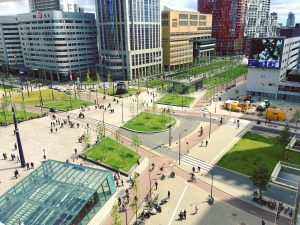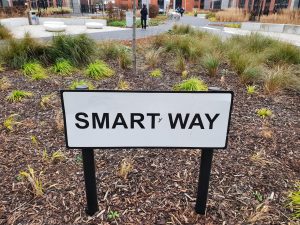 Economic Recovery for a Green and Smart Society
Economic Recovery for a Green and Smart Society
We are writing a series of blog posts with our colleagues at Urban Economic about how we can recover the economy to build a green and smart society. We will talk about what a ‘green society’ is, and how digital can enable and support sustainable growth.
In this blog series, we will discuss:
- The Green Recovery Opportunity
- How connectivity, data and digital enables a sustainable recovery and growth
- The sustainable energy opportunity.
- The market opportunity for sustainable mobility
- Financing green recovery initiatives
What does the future look like post pandemic?
The COVID19 crisis has resulted in a perfect storm of pressure and opportunity. Places have their rebound strategies, but they are also in the midst of drafting strategies for climate change, low carbon or Net Zero, to uphold promises made early last year in response to the climate emergency. Places are following and updating their resilience strategies, if they have them, or otherwise pondering how they might rejuvenate their economies and get people back into work. ‘Build Back Better’ is being thrown around, along with ‘Build Back Greener’. It has never been a better time to think about how we are going to seize the opportunities presented by the crisis.
Policies and investments supporting a Green Industrial Revolution in the UK were announced by the UK government on 18th November 2020. These accelerate support for electric vehicles and the phasing out of diesel and petrol a decade earlier than previously expected, support offshore wind, and signal a new orthodoxy in government that green = jobs (instead of green = cost).
What is a Green and Smart society?

Meanwhile ‘Smart’ can have tech centric connotations, but we want to move toward the understanding of a smart society rather than a smart place. The Director of Urban Planning in Vienna Thomas Madreiter in a recent interview with Smart City World says:
“I am actually no big fan of the term ’smart city’ as it is often associated with a purely technological approach. If I could miraculously change the worldwide discourse on state-of-the-art concepts for future-proof cities, I would rather speak of ’sensible’, ’prudent’ or even ’wise’ cities: We have to work on innovative solutions to sustain or even increase the quality of living in cities while facing the climate crisis among other challenges.”
Can the two coexist? Yes, in fact, one supports the other. A ‘green and smart society’ for us broadly encompasses inclusive growth, sustainable economy and businesses, good quality employment, concern for people and communities, and a healthy robust environment. All of these are things that no one objects to. Getting there can take several routes and move through contested spaces – one that comes to mind is the conflict on our public roads between increasing cycling and walking (supported by Central Government) to tackle rising obesity and comorbidities associated with being hit harder by COVID19, versus the cars and light goods vehicles needed to move our packages around.
In our next release, we will explore how the two work together, and how connectivity, data and digital enables a sustainable recovery and growth. These blog posts are part of a wider discussion which we invite you to be part of.
Urban Economic and Perform Green are teaming up to work on maximising economic recovery and increasing regional prosperity in the post pandemic environment. We will present our latest thinking explored in the recent white paper from Urban Economic: The Air that we Breathe: A playbook for the Urban Post Pandemic Environment. We will explore 3 strategic pillars to maximise economic and social returns:
- Green Infrastructure
- Energy Efficiency
- Digitisation
In the post-pandemic environment now, more than ever, city and regional leaders need to maximise their growth potential and be confident that the strategies and solutions they apply have a high and measurable return on investment. Recovery requires broad-based fiscal stimulus and strategic investment: jobs need to be created and new areas of growth identified and pursued.
The governments that choose to implement a sustainable post-pandemic recovery will become the benchmark for cities of the future, reaping the gains of early investment through a stronger economy and a healthier society.

 Economic Recovery for a Green and Smart Society
Economic Recovery for a Green and Smart Society